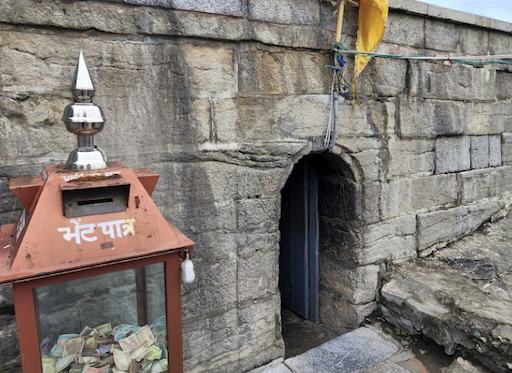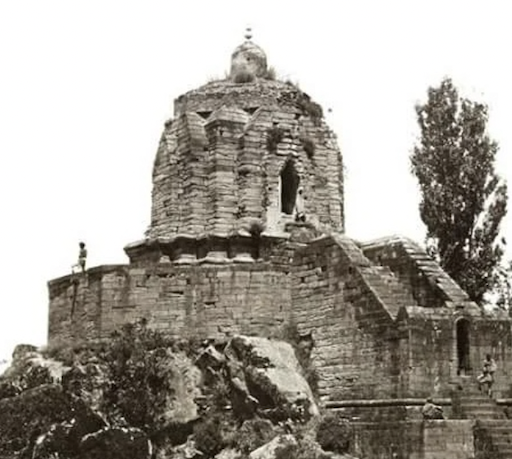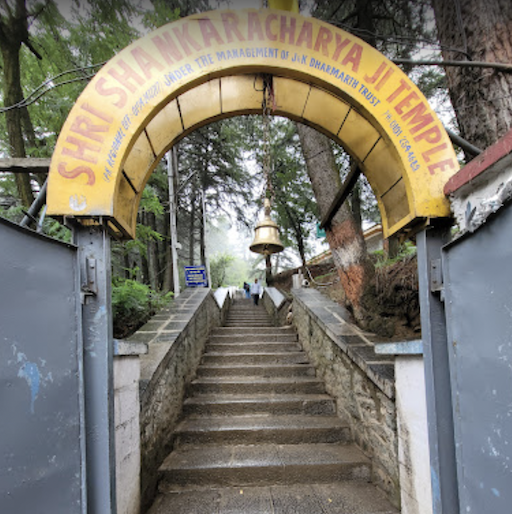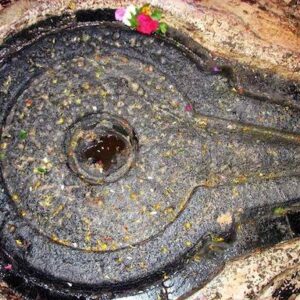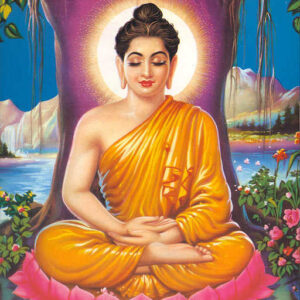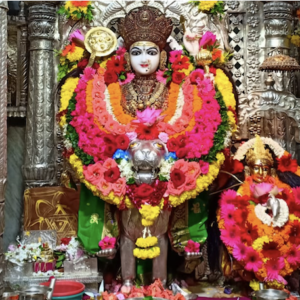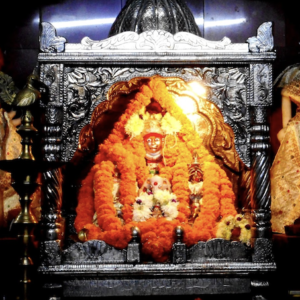This is a consecrated Shiva Temple of Jyestheshwara Temple. The temple also contains the Tapasthali of Sri Adi Sankaracharya.
There is a a place to sit and meditate. You can go into meditative states here effortlessly.
How to Get there
The temple is located on top of Shankaracharya hill in the middle of Srinagar, next to Dal Lake. You can visit the temple either by trekking or vehicle.
Map:
https://goo.gl/maps/wr4tTHFHd74e5GNv8
About Shankaracharya Temple
Shankaracharya Temple or Jyeshteshwara Temple is a Hindu temple situated on top of the Shankaracharya Hill on the Zabarwan Range in Srinagar, Jammu and Kashmir, India. It is dedicated to Lord Shiva. The temple is at a height of 1,000 feet (300 m) above the valley floor and overlooks the city of Srinagar.
On festivals such as Herath, as Maha Shivratri is known as in the region, the temple is visited by Kashmiri Hindus.[1]
The temple and adjacent land is a monument of national importance, centrally protected under the Archaeological Survey of India.[2][3] Dharmarth Trust has managed the temple since the 19th century, along with others in the region.[4] Karan Singh is the sole chairperson trustee.[4]
History
The earliest historical reference to the hill comes from Kalhana. He called the mountain ‘Gopadri’ or ‘Gopa Hill’. Kalhana says that King Gopaditya granted the land at the foot of the hill to the Brahmins that had come from the “Aryadesa”. The land grant, an agraharam, was called ‘Gopa Agraharas’. This area at the base is now called Gupkar. Kalhana mentions another village in the vicinity of the hill where King Gopaditya housed some of the Brahmins to a village[a] next door in present-day Dalgate. Kalhana also mentions that King Gopaditya built the temple on the top of the hill as a shrine to Jyesthesvara (Shiva Jyestharuda) around 371 BCE.[7]
The Alchon Hun king, Mihirakula is said to have been the founder of the temple, dedicated to Lord Shiva,[8][9] a shrine named Mihiresvara in Halada, and a large city called Mihirapura.[9]
In 1899 James Fergusson placed the temple construction to the 17th to 18th century. Fergusson disputes claims that structures on the basis of which he makes this claim are from repairs.[10] Aurel Stein while agreeing that the superstructures are from a more recent date, places the base and the stairs as much older.[11] Historical figures associated with the monument include Jaloka, one of the sons of Ashoka (Gonandiya), according to the Rajatarangini.[5][12]
Kashmiri Hindus strongly believe the temple was visited by Adi Shankara[17] and has ever since been associated with him; this is how the temple and hill got the name Shankaracharya.[18] It is here that the literary work Soundarya Lahari was composed.[18] It was composed by Adi Shankara after accepting the major faith in the region at the time, that of Shakti, and that the union of Shiva and Shakti, as in Shaktism, transpired into the symbolism of the Sri Yantra.[18][19][20]About Shankaracharya Temple
Names associated with the hill include Sandhimana-parvata, Koh-e-Suleman, Takht-i-Sulaiman or simply Takht Hill, Gopadri or Gopa Hill.[7][22][23] The Dogra King Gulab Singh (1792-1857 CE) constructed the steps to the hill from Durga Naag temple[b] side.[citation needed] Steps existed before as well, leading further, to the Jhelum. Nur Jahan used the stones of the steps in the construction of Pathar Mosque.[25][26]The Maharaja of Mysore came to Kashmir in 1925 and made the electrical search light installations at the temple, five around it and one on the top.[27] The Maharaja left an endowment to fund the cost of electricity.[27] In 1961 Shankaracharaya of Dwarkapeetham put the statue of Adi Shankaracharaya in the temple.[28] Sri Aurobindo visited the temple area in 1903.[29] Vinoba Bhave visited it in August 1959.[30]

